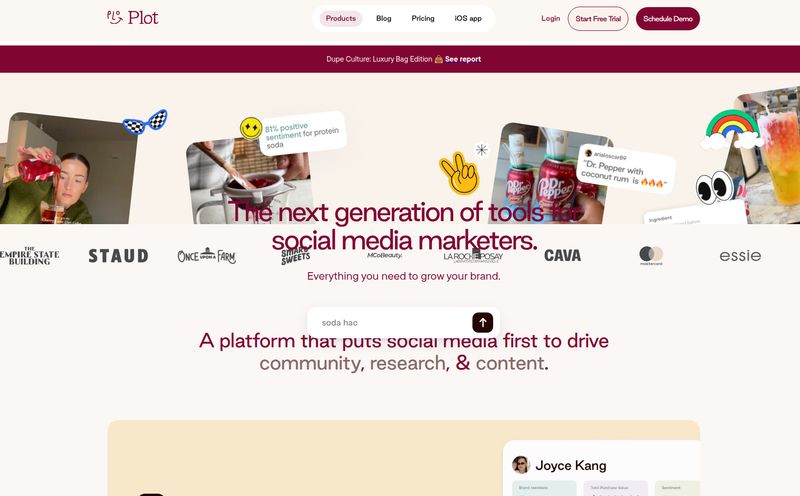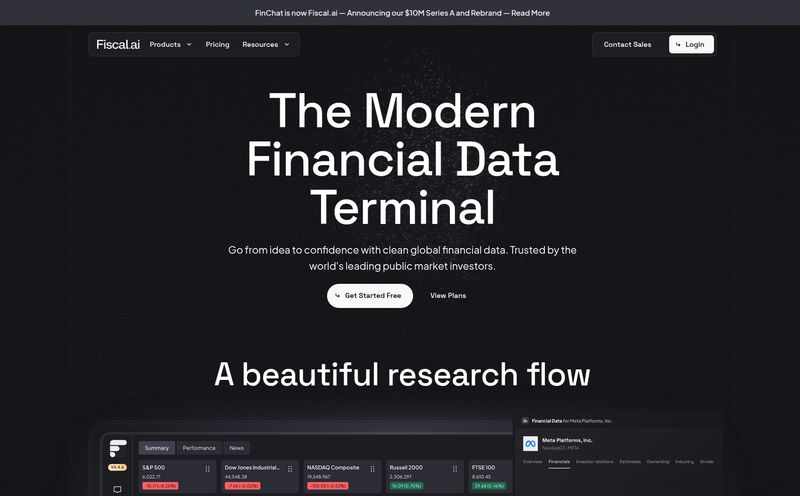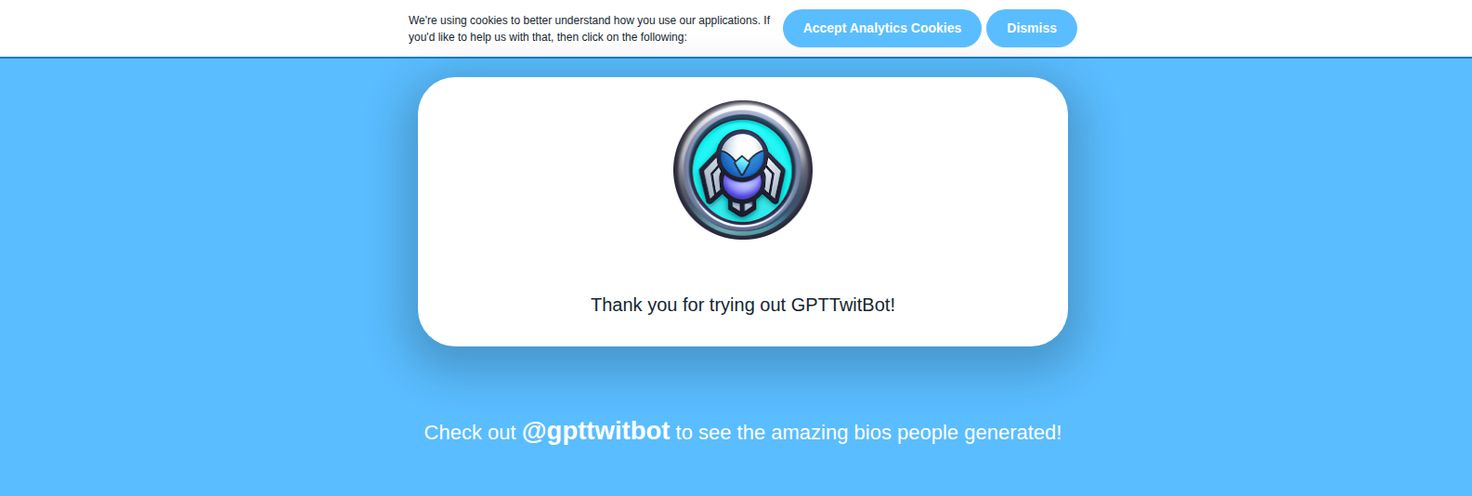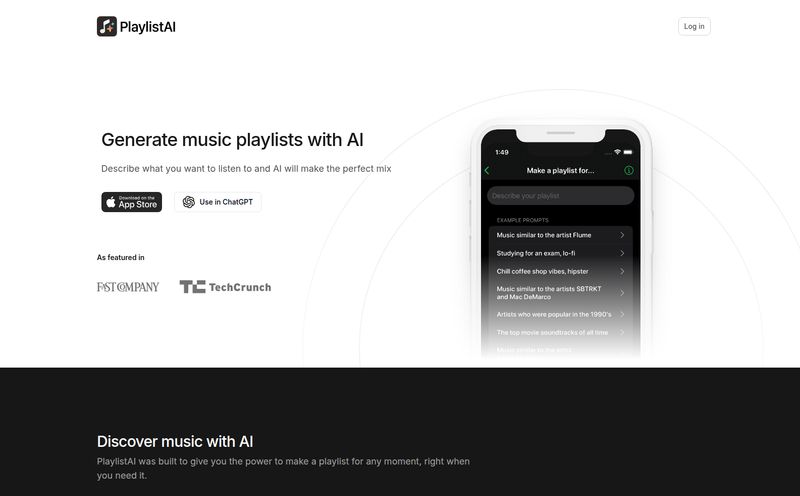Let me tell you a story. A few years back, I was consulting for a SaaS startup that was just starting to get traction. Which is great, right? Except the user feedback was coming from everywhere. Zendesk tickets, angry tweets, rambling emails to the CEO, comments on Reddit threads we didn't even know existed. It was a nightmare. A full-blown, multi-channel, notification-blasting nightmare.
We spent hours every week just trying to copy-paste this stuff into a spreadsheet, let alone make any sense of it. The loudest voices always seemed to win, not necessarily the best ideas. So, when I hear about a tool that claims to be a “feature mining platform,” my ears perk up. The promise of a tool that can wade into that chaotic river of user feedback and emerge with clear, actionable insights is the siren song for every beleaguered product manager out there.
The tool on my radar today is ChoiceChaser. Their pitch is compelling: use AI to aggregate and analyze all that user chatter to find out what you should actually build next. So, naturally, I went to check them out and... well.
This is what I saw: Error code 521. Web server is down.
Okay, not the best first impression! Look, it happens to everyone. Servers go down, coffee gets spilled on keyboards, things break. As I'm writing this, their site is having a bit of a nap. But it’s a good reminder that even in our slick, automated world, tech is still tech. I’m going to press on, because the idea behind ChoiceChaser is too interesting to ignore over a temporary glitch.
So, What Is ChoiceChaser Supposed to Do?
Assuming the server wakes up from its slumber, ChoiceChaser positions itself as a feature mining platform. Think of it like a gold prospector for your product. All the user feedback—the emails, chats, surveys, and social media posts—is the murky river water. Buried in all that silt and noise are nuggets of pure gold: genuine, unmet user needs and brilliant feature ideas.

Visit ChoiceChaser
ChoiceChaser’s job is to be the pan and the sluice box. It connects to your various channels, pulls all that text into one place, and uses its AI to sift through it. Instead of a human having to read 500 different messages that all vaguely mention “reporting,” the AI is meant to identify that “better reporting” is a potential feature, quantify how many people are asking for it, and even gauge the urgency in their language. It's about turning a qualitative mess into quantitative direction.
Centralizing the Communication Chaos
The first step in any kind of analysis is getting all your data in one spot. The platform claims to integrate with sources like Zendesk, email histories, and other conversation platforms. It also actively scans public sites like Reddit and Twitter for mentions. This alone is a huge value proposition. The amount of time product teams spend just hunting down and collating feedback is, frankly, a little depressing. Having one central repository is the dream.
The AI Magic Wand
This is the core of it all. Once the data is in, ChoiceChaser’s AI gets to work. It’s not just counting keywords. It’s supposedly using natural language processing (NLP) to understand intent and context. It automatically extracts what it thinks are potential features from all those scattered conversations. So, a user saying, “I really wish I could just get a daily summary of my team’s activity sent to my inbox” isn’t just noise; it’s flagged as a potential feature: “Automated Daily Email Reports.”
From Raw Suggestion to Real Strategy
Finding ideas is only half the battle. We all have backlogs filled with a million “good ideas.” The real challenge is prioritization. ChoiceChaser helps here by matching these newly extracted needs against your existing feature list to avoid duplication. Then, it helps you prioritize them based on factors like frequency (how many people are asking for this?), urgency (how badly do they need it?), and how well it aligns with your existing product roadmap. This gives you a data-backed argument for what to work on next, which is a lot more powerful than just going with your gut.
The Good and The Potential Sticking Points
No tool is a silver bullet, and from what I can piece together, ChoiceChaser is no different. On one hand, the potential is enormous. Moving away from “I feel like we should build this” to “The data shows 25% of our high-value users are blocked by this missing feature” is a game-changer. It provides air cover for product managers and focus for development teams. It helps you find those unmet needs that could become your next big differentiator.
However, there are some clear watch-outs. First, the effectiveness of the whole system hinges on the quality of your user feedback. If the feedback you're getting is vague or low-quality, the AI’s insights will be too. Garbage in, garbage out, as they say. Second, while it centralizes data, it might require a bit of integration work to get all your platforms talking to it, which can be a resource drain for smaller teams. And, as we'll see, the pricing could be a hurdle for some.
Breaking Down the ChoiceChaser Pricing
Alright, let’s talk money. Since their site is down, I’m glad I have some archived info on this. Pricing is often the point where a cool idea meets the harsh reality of a budget. ChoiceChaser seems to have a pretty standard tiered approach.
| Plan | Price | Key Features |
|---|---|---|
| Free | $0 / month | 50 messages |
| Basic | $11 / month | 1,000 messages |
| Professional | $26 / month | 4,500 messages, Auto-replies, Manual frequency management |
| Commercial | $79 / month | 20,000 messages, Advanced analytics, Integrations, API |
My take? The Free tier is basically just a demo. 50 messages will be gone in an hour for any active company. The Basic plan at $11/month is actually pretty reasonable for a startup or a small business just starting to get overwhelmed. The Professional plan adds some nice workflow automation. But the Commercial plan at $79/month is where it gets serious, with the API and advanced analytics. That’s clearly aimed at established product teams who live and breathe this stuff.
Who Is This Really For?
This isn't a tool for the solo founder tinkering on a weekend project. This is for established SaaS businesses, product managers, and UX researchers who are at a scale where they can no longer manually process feedback. If you have a dedicated customer support team and are hearing the same feature requests over and over again from different channels, you're the target audience. It's for teams who want to make their product roadmap a reflection of their users' needs, not just their own assumptions.
Final Thoughts on the Promise of ChoiceChaser
So, where does that leave us? I’m genuinely intrigued by ChoiceChaser. The problem it’s trying to solve is one of the most persistent and frustrating ones in the world of software development. The approach—using AI to find the signal in the noise—is absolutely the right direction. It’s a tool designed to give product teams more confidence and less guesswork.
Of course, I have to circle back to that server error. It’s a small thing, perhaps, but it’s a reminder to always check the fundamentals. A great idea is nothing without solid execution. Assuming they get the server sorted (and I'm sure they will), ChoiceChaser is definitely a platform I'll be keeping an eye on. In an industry full of noise, any tool that helps you listen better is worth a look.
Frequently Asked Questions
- 1. What exactly is feature mining?
- Feature mining is the process of systematically analyzing user feedback from various sources (like emails, support tickets, and social media) to identify, extract, and prioritize potential new features for a product. Its a way to use data to decide what to build.
- 2. Does ChoiceChaser integrate with tools like Slack or Jira?
- The high-tier 'Commercial' plan includes an API and notification integrations, which typically means you can build connections to other tools like Slack for notifications or Jira for creating tickets from feature requests. You'd want to confirm the specifics once their site is back up.
- 3. How accurate is the AI in identifying features?
- This is the million-dollar question for any AI tool. Its accuracy will heavily depend on the volume and clarity of your user feedback. AI is good at spotting patterns, but it's not a mind reader. It should be seen as a powerful assistant that surfaces strong suggestions, which a human product manager then validates.
- 4. Is the free plan of ChoiceChaser useful?
- With a limit of 50 messages, the free plan is best thought of as a trial or a demo. It's enough to test the interface and see how it processes a small batch of feedback, but it's not a long-term solution for any active business.
- 5. What are some alternatives to ChoiceChaser?
- The product feedback space has some established players. Tools like Canny, Productboard, and UserVoice tackle similar problems, though often with a different emphasis on roadmapping, public feedback boards, or enterprise features. ChoiceChaser's focus seems to be specifically on the AI 'mining' aspect.
- 6. Why was the ChoiceChaser website down?
- The error shown (Cloudflare Error 521) typically means that while the Cloudflare service is working, it couldn't get a response from the actual web server hosting ChoiceChaser's site. This could be due to maintenance, a crash, or a network issue at their hosting provider. It's usually a temporary problem.
Reference and Sources
- ChoiceChaser Pricing (Archived Information): https://choicechaser.com/price
- Productboard - A competitor in the product management space: https://www.productboard.com/
- Canny - Another user feedback management tool: https://canny.io/



